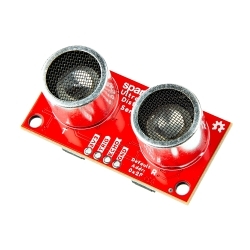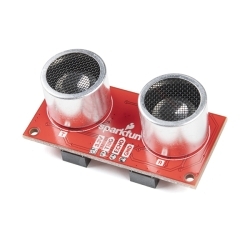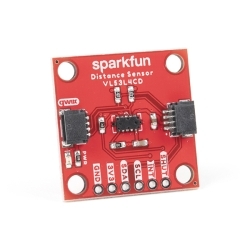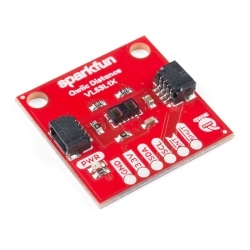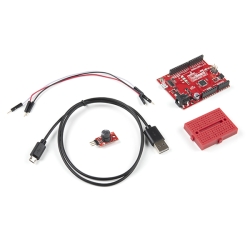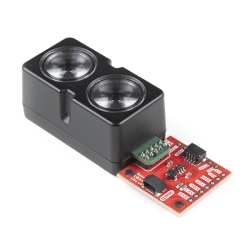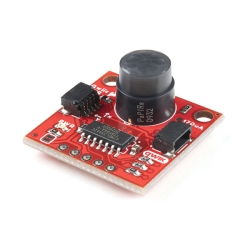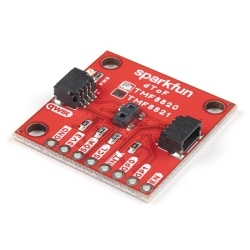Types of Distance Sensors
Explore the world of distance sensing with SparkFun's comprehensive collection of distance and proximity sensors. Our Distance Sensing category offers a wide range of solutions for measuring proximity, detecting objects, and calculating distances accurately. Learn more about the different types of distance sensors we carry:
Ultrasonic
Ultrasonic sensors measure distance using high-frequency sound waves. By emitting a sound pulse and timing how long it takes to bounce back, they can calculate how far away an object is. They're great for detecting objects in simple environments, especially in robotics and automation.
LiDAR
LiDAR (Light Detection and Ranging) uses laser pulses to map surroundings in high detail. By measuring the time it takes for a laser to reflect off a surface and return, LiDAR can create precise 3D models of environments, perfect for mapping, drones, and autonomous vehicles. There's even a LiDAR sensor on Mars!
Pulsed Radar
Pulsed radar sensors emit bursts of radio waves and measure the time delay of their return after bouncing off objects. They work well in poor visibility conditions like dust, fog, or darkness, making them ideal for harsh or outdoor environments. Some pulsed radar applications can even work through walls.
Time of Flight (ToF)
ToF sensors measure how long it takes for light to travel to an object and back. Often using VCSEL (vertical-cavity surface-emitting laser) technology, these sensors are compact and fast, offering accurate short-range distance measurements, often used in gesture recognition, robotics, and smartphones.
LED-Based
LED-based distance sensors use modulated infrared or visible light emitted by LEDs and reflected off surfaces to estimate distance. They're low-power and suitable for basic proximity detection and object avoidance in tight spaces.
Infrared (IR)
Infrared sensors detect reflected IR light to determine the presence and distance of objects. They’re simple and affordable, ideal for short-range detection, line-following robots, and basic obstacle avoidance.
Odometry
Odometry sensors track movement over time, typically using wheel rotation or encoder data to estimate distance traveled. While they don’t detect objects directly, they’re essential in robotics for estimating position and navigating space over time.


